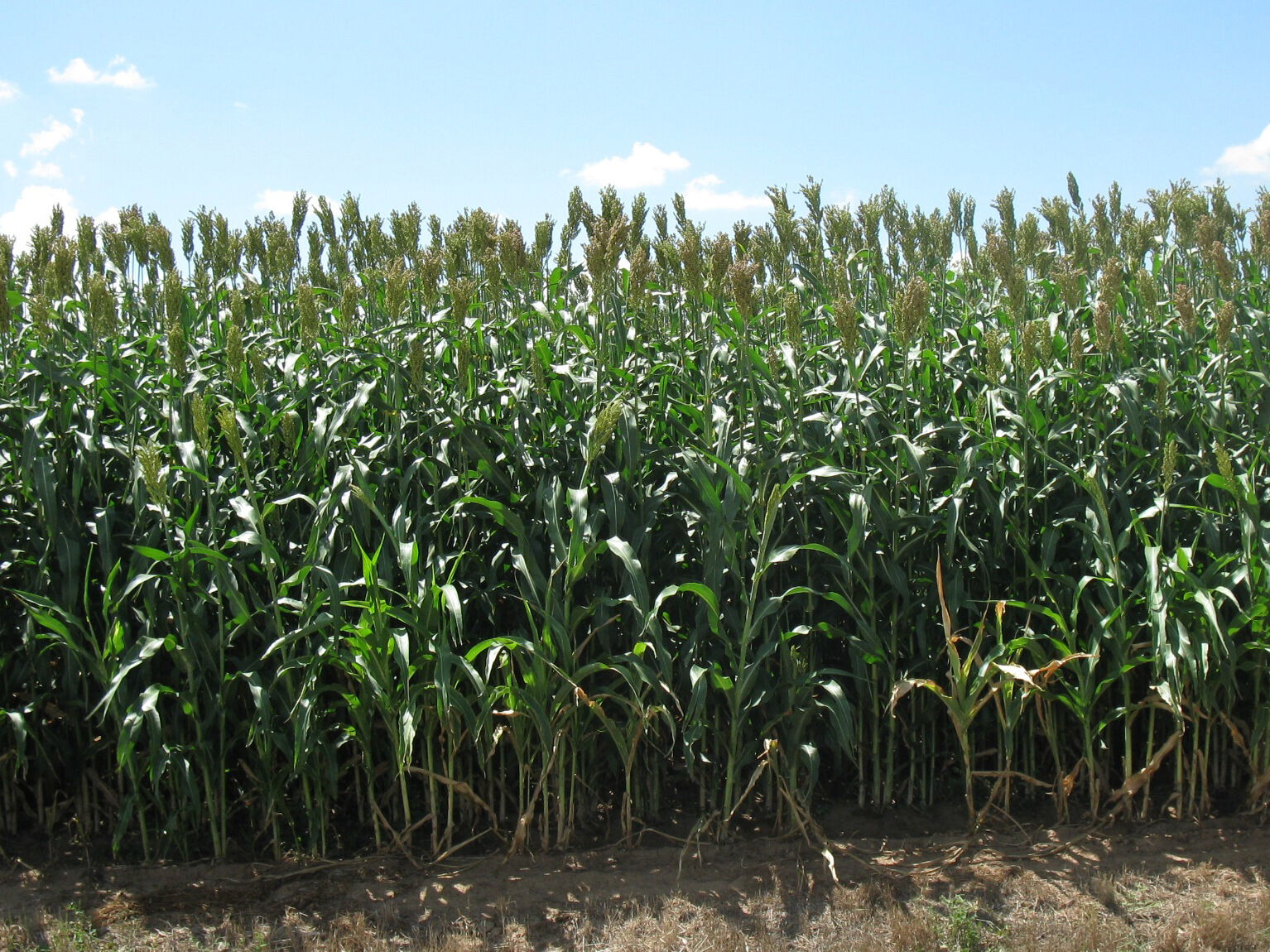Throughout the High Plains and other dairy and feedyard regions of the United States, silage sorghum is gaining in popularity. This is largely due to silage sorghum’s low water requirement and the continued introduction of new and improved hybrids.
In many regions, the decrease in the amount of irrigation water available is causing growers to consider silage sorghum for the first time.
For new growers, there are many management decisions to consider including hybrid selection, seeding rate, row spacing, weed control and fertilizer needs.
Silage sorghums come in different categories and three main types are described below:
• Conventional—these are basically tall leafy grain sorghum hybrids.
• BMR or brown mid-rib—these hybrids do in fact have a brown mid-rib, but what makes them unique is that they have lower lignin content than conventional hybrids resulting in increased digestibility.
• Brachytic dwarf—these hybrids have short internodes making the leaves close together giving the plants a dense leaf appearance. The shortened height should also improve standability.
Once the type of silage sorghum has been chosen, it is important to pick the maturity that best fits the environment and end use. A full season hybrid will typically have a higher yield potential, but requires more water, fertilizer and a longer growing season. Conversely early maturing hybrids use less water and fertilizer and can be harvested earlier in the season providing an opportunity for double cropping to winter forage, if desired.
Seeding rates have been coming down the last few years. Historically 120,000 seed per acre was typically planted. Today’s hybrids will yield well at a rate of 60,000 to 80,000 seed per acre. The lower seeding rates improve standability late in the season without sacrificing yield.
Row spacing varies across the country and depends on a number of factors. In those areas where high yields are the goal and water is not limiting, a narrow row of 15 to 20 inches is often desired. In environments with limited water,30- to 40-inch rows are more popular.
Nitrogen requirements are based on the expected yield. A good rule of thumb is 8 to 9 pounds of nitrogen will be needed for every fresh weight ton of silage produced. With this in mind, a 22-ton silage yield will need approximately 185 pounds of nitrogen.
Weed control options are generally similar to those used in grain sorghum. A pre-emergence weed control program is essential with most growers relying on atrazine in combination with one of the group 15 herbicides s-metolachlor, acetochlor or dimethenamid. Controlling grass has long been an issue in silage sorghum. New in 2022 is the introduction of Advanta’s igrowth technology into silage sorghum. This technology allows for IMIFLEX herbicide from UPL to be applied either pre-emergence or as an in-season post application to control a wide range of grasses.
Insects are normally not a big concern in silage sorghum. The one exception is sugarcane aphids in the southern High Plains, mid-South and mid-Atlantic regions. Three insecticides, Sivanto Prime, Transform and Sefina, will all effectively control sugarcane aphids. In addition, there are now several silage sorghum hybrids that are available with at least some degree of tolerance to sugarcane aphids. A list of these can be found on the United Sorghum Checkoff Website, https://www.sorghumcheckoff.com/.
It is important to harvest the crop when it is in the early soft dough stage. This occurs soon after the grain changes color and can still be mashed between the thumb and forefinger. Once the kernel becomes hard, it becomes much more difficult for the cattle to digest the grain. A properly set grain processor on the harvester is recommended.
Editor’s note: Brent Bean, Ph.D., is the Sorghum Checkoff Director of Agronomy, Lubbock, Texas. For more information visit www.sorghumcheckoff.com.



